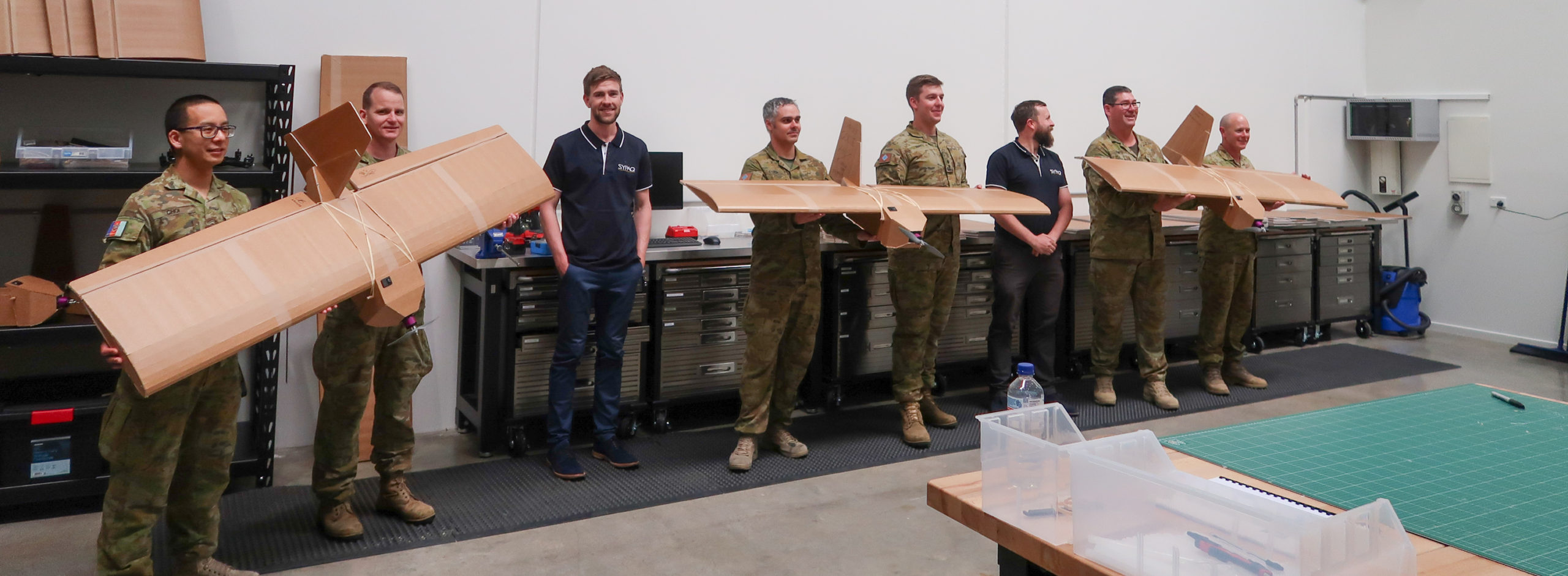Ukrainian armed forces are using drones made out of cardboard and rubber bands to fight the Russian Army. At least 100 of these cheap drones, produced by an Australian company SYPAQ, are being supplied to Ukraine monthly in flatpack form.
Knowns as the Corvo Precision Payload Delivery System (Corvo PPDS), these drones are being supplied by the Melbourne-based company as part of an initiative launched by the Australian government in July 2022.
SYPAQ developed the Corvo PPDS under an AU$1.1 million government contract and pitched it to the Australian Army as a low-cost disposable logistics drone for delivering small, urgent supplies.
The company has not yet disclosed exact specifications or details of the number of drones being shipped to Ukraine or the timing of deliveries.
However, according to openly available information, the drones are supplied in flatpack form, with bodies made out of waxed cardboard. They are effortless to assemble using only a glue gun, knife, pen, and tape. A spanner is needed to attach the propeller.
This was revealed by a group of Australian soldiers in 2019 who assembled the Corvo PPDS.

“Corvo PPDS was easy to put together,” Lance Corporal Will Coyer told the military blog Grounded Curiosity. “Certain parts required attention to detail, but the precision manufacturing of the flatpack kit made it simple.”
The flatpack design makes it very easy to deliver these drones, with 24 of them packed in pizza-size boxes fitted on a pallet. These boxes also contain the drones’ assembly materials, tools, motors, and batteries.
The company has also not disclosed the price of these drones. However, according to certain media reports, each drone costs around US $680-$3,400.
Origami Of Death
Described by some media reports as the ‘Origami of Death,’ the PPDS is also very easy to operate, with its flight being programmed through a simple interface on an Android tablet. It flies autonomously with no need for operator control at all.
It uses GPS guidance where available, but if GPS is jammed, the control software can determine its position from the drone’s speed and heading.

This means that the drones can perform missions even under heavy radio jamming, which is an essential factor in the Ukraine conflict where Russian electronic warfare, as previously discussed by EurAsian Times, has been very effective in downing many Ukrainian drones.
According to military commentators, Ukraine is not using these drones for logistics but for battlefield awareness and even kinetic missions.
“Following feedback from end-users in Ukraine, the system has also been adapted for intelligence, surveillance, and reconnaissance missions,” SYPAQ stated in a press release.
This could mean that the PPDS will be sent over Russian-occupied territory in Ukraine, equipped with a camera or other sensors to gather intelligence or conduct surveillance or reconnaissance.
The drone is launched using a small catapult with a range of 120 kilometers. It could be used for drone-assisted long-range fires against targets as far as 60 kilometers, thereby enabling the much better deployment of HIMARS and other long-range systems that have already been very effective.

Furthermore, the PPDS are also being used for ‘kinetic missions,’ according to Ukrainian ambassador to Australia, Vasyl Myroshnychenko, who recently said that “Ukrainian soldiers are already using them (PPDS) for a variety of missions including lethal ones.”
Myroshnychenko described these drones saying, “It looks like something that kids would play with, but when you see what it can do, it’s really amazing. They have been very good at inflicting damage on the enemy.”
Notably, the PPDS, despite being simple and basic to construct, is much more sophisticated than some of the homemade drones the Ukrainian forces have been using for bombing Russian positions.
Also, Ukraine is currently using thousands of small quadcopter drones. However, the operators of these drones often complain about their limited range and how they would instead use a fixed-wing design to fly more than a few kilometers.
????✨✨ New photos and video below pictures of what appears to be a quad-copter drones that can hold numerous large mortars ? ~#Ukraine #UkraineRussiaWar #drones #UAV #drone #Kherson #Donetsk #quadcopter pic.twitter.com/QljztFFwOb
— Steven Thomas (@aNdr0iz) September 6, 2022
Therefore, the PPDS also seems to fulfill the exact requirement of the Ukrainians for reconnaissance and strike missions. Also, conceptually, these drones are not very different from the Iranian-made Shahed kamikaze drones, which the Russians have been using effectively to destroy Ukraine’s critical infrastructure.
While the cardboard-made airframe of the drone may not last for more than a few missions, reports suggest that it could easily be replaced by one made of more robust low-cost material like plywood.
- Contact the author at tanmaykadam700@gmail.com
- Follow EurAsian Times on Google News





